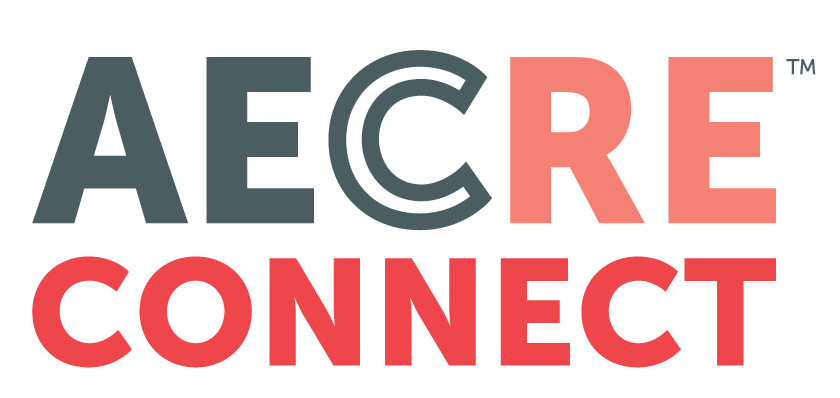Read the original article from ArizonaEconomy.com, a product of Elliott D. Pollack & Company, here.
Data released last week simply reinforces what we already knew. When the economy opens up, the jobs that will quickly recover are mainly in industries where jobs were lost due to COVID-19 related shutdowns. And when partial shutdowns reoccur due an acceleration in COVID cases in one part of the country, those jobs are lost again. But, all of this reinforces the concept of a “have” and “have not” economy (those who can’t find work will come out of the current situation in bad shape financially while those who are still employed will come out of this in good shape financially) and the insanity of a congress and their current stalemate.
The lack of common sense that has kept a meaningful follow up to the Cares Act from being passed will just make it tougher for much of the “have not” population. Thus, at the other end of this, look for a recovery that looks like something between a a square root sign (√) with some uptrend in the horizontal bar or a K (a bifurcated recovery-think something that looks like <) with a rising top leg and flattish bottom leg. In other words, there will be a quick recovery for those who were employed during COVID-19 but a slow recovery for those who either didn’t or couldn’t keep up with their debt payments.
Some of this could be mitigated if congress began to act like they were at all concerned. But, even then it’s probably too late to mitigate major parts of the issue. As we described last week, a significant percentage of loans now in forbearance will never be paid. We are just kicking the can down the road. According to the Mortgage Bankers Association, over 15% of FHA guaranteed loans were delinquent in the second quarter. That compared to less than 10% in the first quarter. The second quarter had the highest level of delinquencies since the inception of the survey in 1979. The delinquency rate on conventional loans doubled to 6.6% in the second quarter. When government moratoria on evictions and the forbearance agreements come to an end, it will get ugly. It will be put up or shut up time for millions of Americans. This will dampen the recovery process. Overall, whether you’re an optimist or a pessimist will likely depend on which of the two groups you fall into.
One of the more interesting concepts I read about last week (keep in mind I’m an economist) was the FOMC (think Federal Reserve) minutes from July 28-29. In that meeting the FED’s governors discussed the need for even more fiscal stimulus. This is on top of what has already passed (The Cares Act) and all the monetary stimulus that the FED has pumped into the system plus all the monetary stimulus it plans to keep pumping into the system. This is a statement that should not be taken lightly.
In other data, initial claims for unemployment insurance were slightly higher. Leading indicators were up. Commercial mortgage delinquencies rose, especially for hotel and retail loans. Residential construction remains the bright spot in the economy. But, more so in apartments. Single family resales rose rapidly. And home builders are still very confident.
In Arizona, initial claims for unemployment insurance rose modestly but the state continues to do much better than the nation as a whole. There was a slowdown in employment as should have been expected after two strong months combined with the reclosure of a few parts of the economy in July. The state still outperformed most other states in terms of employment through the first seven months of 2020. And Greater Phoenix remains the best performing major employment market in the country for the same time period. In addition, single family permits in Greater Phoenix were up significantly in July and while the gains were not as significant, they were still up in Greater Tucson.
U.S. Snapshot:
- Initial jobless claims rose last week. The absolute numbers aren’t as important as the fact that the numbers aren’t improving. Until the economy more fully opens, the numbers are likely to remain high. This is not good news especially in the face of a congress that has left those unemployed due to COVID-19 out to dry. The number who have filed initial claims for unemployment insurance since mid-March now equals 38% of March employment. In Arizona, the same number is 29%. This is another indicator of how much better Arizona is doing than the country as a whole. Nationally, the number of initial claims was 414% above year earlier levels (that’s bad). In August, it is up “only” 285% (that’s not good, but better).
- The Index of Leading Indicators increased by 1.4% to 104.4 in July. That’s better than expected. It follows a 3% gain in June. This signals a recovery without momentum.
- The Moody’s Delinquency Tracker for total delinquencies jumped 217 basis points to 7.95% in July. The Tracker excludes loans fewer than 60 days delinquent. The subcomponents were mixed with hotel and retail reporting the largest increase last month. All regions had increases in delinquencies.
- Mortgage delinquency rates increased significantly in the second quarter rising 386 basis points to 8.22%. A year ago, the rate was 4.53%. Conventional loans, VA loans and FHA loans all witnessed a rise in delinquency rates.
- Residential construction is one of the few bright spots in the economy. It is the one sector that is having a “V” shaped recovery. Housing starts jumped 22.6% in July to 1.496 million units on an annualized basis. The biggest gains were in apartments which were up 23.4% over a year ago. Single family starts were up 7.4%. Apartment permits were up 9.4% from a year ago and single family were up 15.5%. This indicates that construction will continue to be strong
- The NAHB Housing Market index, an indicator of home builder confidence in the market for newly-built single-family homes, increased 6 points to 78. The index now stands at its highest reading in the 35 year history of the series.
- The NAR reported that existing home sales rose by 8.7% over a year ago in July. Existing single family home sales were up 9.8% in terms of sales and 8.5% in terms of prices on a year over year basis.
- National hotel occupancy increased to 50.2%. That’s still down 32.3% from a year ago. It’s also a minor gain from the previous week.
- TSA weekly traveler throughput was up modestly to 4,979,279. That’s up from 4,865,794 but still down 72.1% from a year ago.
Arizona Snapshot:
- Initial claims for unemployment in the state rose from 11,665 two weeks ago to 13,515 last week. Initial claims were 285% above year earlier levels. The increase reflected the reclosure of some segments of the economy in early July as a result of the increase of COVID-19 cases in the state.
- The state added 2,500 jobs in July on a seasonally adjusted basis. This follows very strong months in May and June. The slowdown was a reflection of the reclosure of certain parts of the economy as a result of the spike in cases in early July. With the decline in cases, deaths and hospitalizations since the spike and the resultant reopening of certain parts of the economy, August should look better. Since February, the level of national employment has declined 8.4% while the state has declined “only” 5.2%. This is another indicator that the state is doing better than the U.S. as a whole. In that regard, Arizona is virtually tied for second in terms of employment performance for the first seven months of 2020. This is a strong performance even though for the first seven months of the year, employment in the state is down 1.8%. Greater Phoenix is the best performing major employment market in the country so far this year. While employment is down 1.4% compared to the first seven months of 2019, Greater Phoenix has lost fewer jobs in percentage terms than any other major employment market.
- The state’s seasonally adjusted unemployment rate rose slightly in July. The rate was 10.6% compared to 10.0% in June.
- According to R. L. Brown, permits for new single family housing units rose 26.7% from July of 2019. This year, 2,897 units were permitted while a year ago, 2,287 units were permitted. According to Brown, resales were up 2.7% over the same period. This number was held back by the lack of resale inventory.
- The Southern Arizona Housing Market newsletter said that single family permits in Greater Tucson were up 8.2% to 437 units in July. Year-to-date, resales in that market fell 1.6%. Just as in Greater Phoenix, lack of resale inventory was a major issue.
- Seated diners in Arizona were down 51.7% from last year. In Greater Phoenix, they were down 62.6% from a year ago. That compares to 67.2% down for the previous week. Some progress.
- Statewide mobility to the workplace remained nearly flat at around 34.6% down from a year ago. Mobility to retail and recreational places was also flat in the state at about 23% down from a year ago.
About EDPCo
Elliott D. Pollack & Company (EDPCo) offers a broad range of economic and real estate consulting services backed by one of the most comprehensive databases found in the nation. This information makes it possible for the firm to conduct economic forecasting, develop economic impact studies and prepare demographic analyses and forecasts. Econometric modeling and economic development analysis and planning are also part of our capabilities. EDPCo staff includes professionals with backgrounds in economics, urban planning, financial analysis, real estate development and government. These professionals serve a broad client base of both public and private sector entities that range from school districts and utility companies to law firms and real estate developers.
7505 East Sixth Avenue, Suite 100
Scottsdale, Arizona 85251
480-423-9200
Website | Twitter | Facebook



